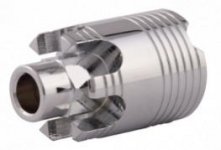Alexander17
Plastic
- Joined
- Nov 26, 2019
Good evening! I'm a machine manufacturing student in my last year and for my main project i have to do the machining process of this part .
.
The problem is that the teacher gave me only this image and no more information and the problem is that i cant start the project only with this ..I need to know the assembly so i can tolerate the surfaces by what they do , decide if there is a thermal treatment needed etc..
I'd like to ask you guys if any of you know what this is and what it does . The main problem is that U shaped millings because i'd say it is a hydraulic piston or something but the millings has to do something important.
What i've gathered so far is that this picture can be found here and here: Hydraulics machined parts, turning components for aerospace
(Examples of our machined parts For lifting equipment we produce: Hydraulic pistons used in control joysticks for caterpillar tracks and for mechanical digger arms, in ETA 100, plus TTH and rectification.
Rehtek precision machines valve parts from metals and alloys
The fact that here is in the valve category
I'd be great if you could provide any data , thank you !
 .
.The problem is that the teacher gave me only this image and no more information and the problem is that i cant start the project only with this ..I need to know the assembly so i can tolerate the surfaces by what they do , decide if there is a thermal treatment needed etc..
I'd like to ask you guys if any of you know what this is and what it does . The main problem is that U shaped millings because i'd say it is a hydraulic piston or something but the millings has to do something important.
What i've gathered so far is that this picture can be found here and here: Hydraulics machined parts, turning components for aerospace
(Examples of our machined parts For lifting equipment we produce: Hydraulic pistons used in control joysticks for caterpillar tracks and for mechanical digger arms, in ETA 100, plus TTH and rectification.
Rehtek precision machines valve parts from metals and alloys
The fact that here is in the valve category
I'd be great if you could provide any data , thank you !


